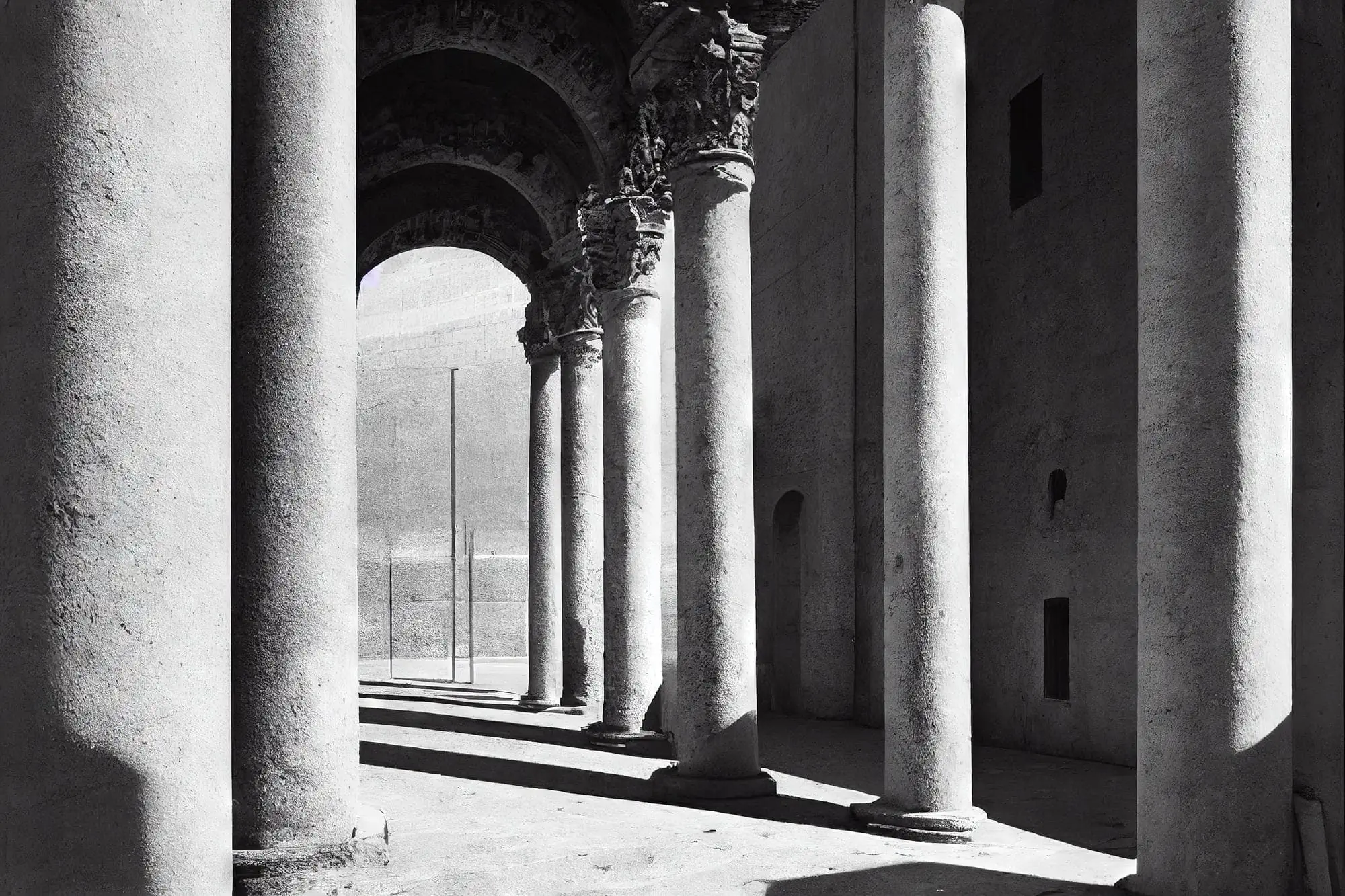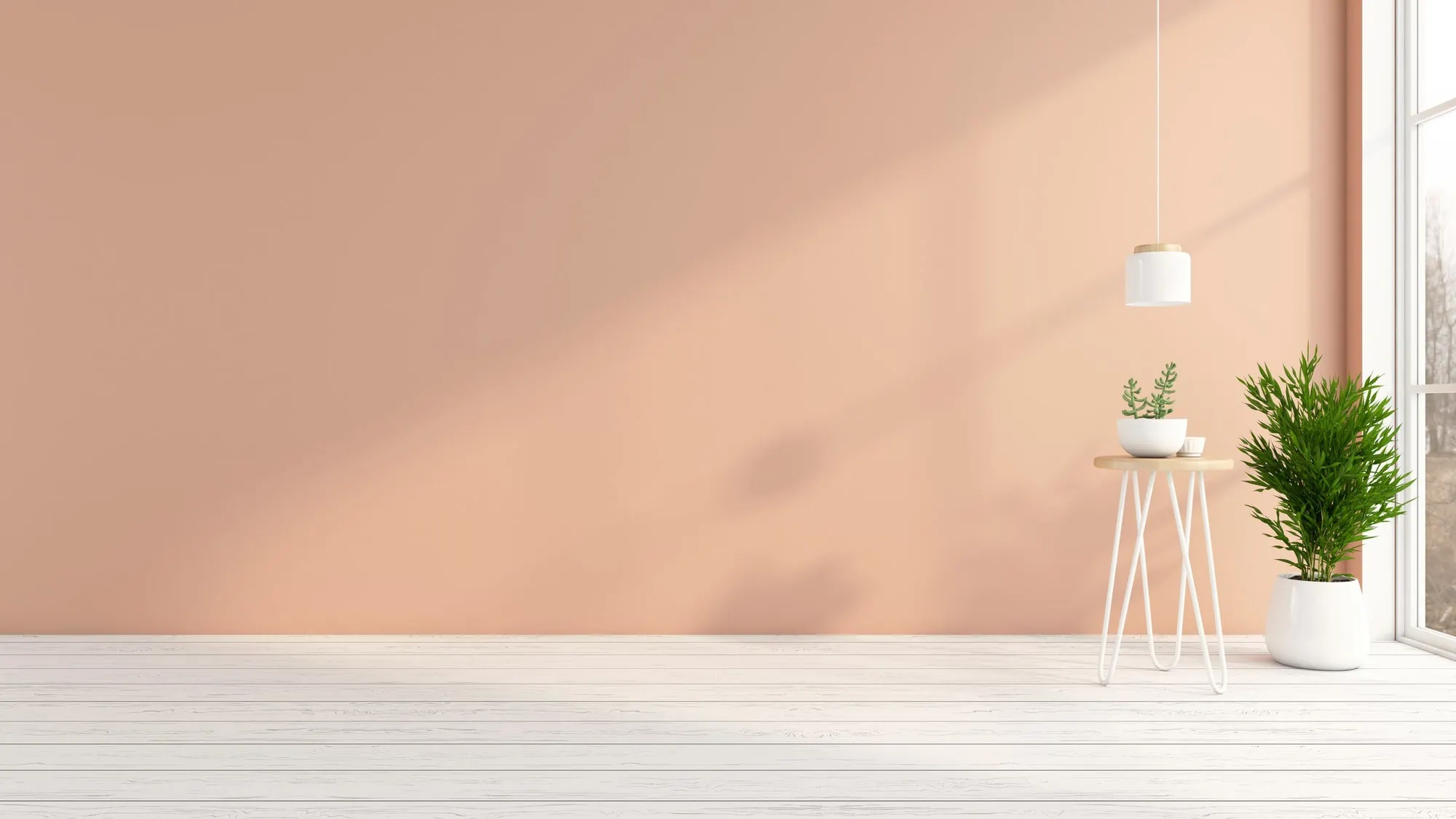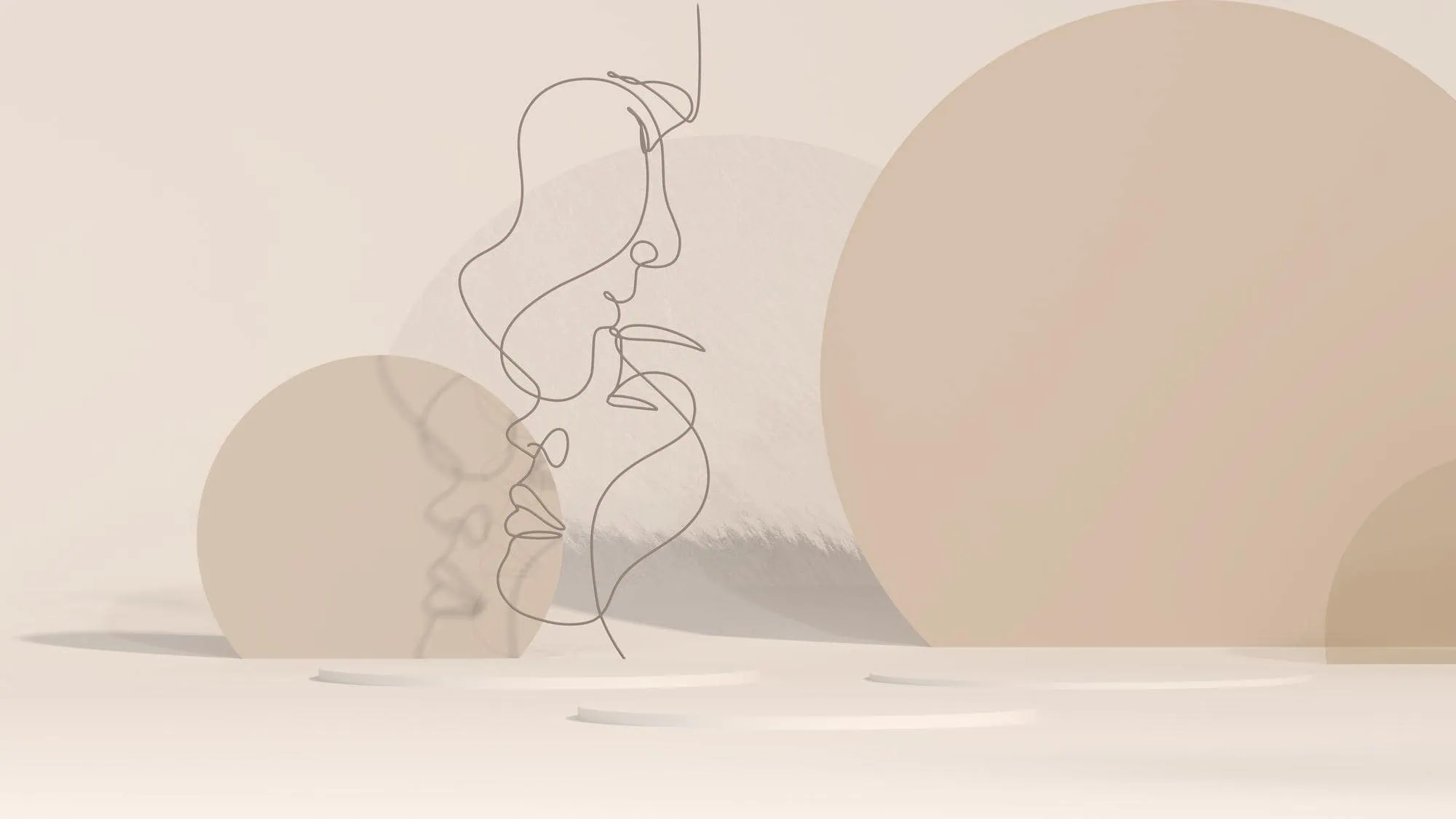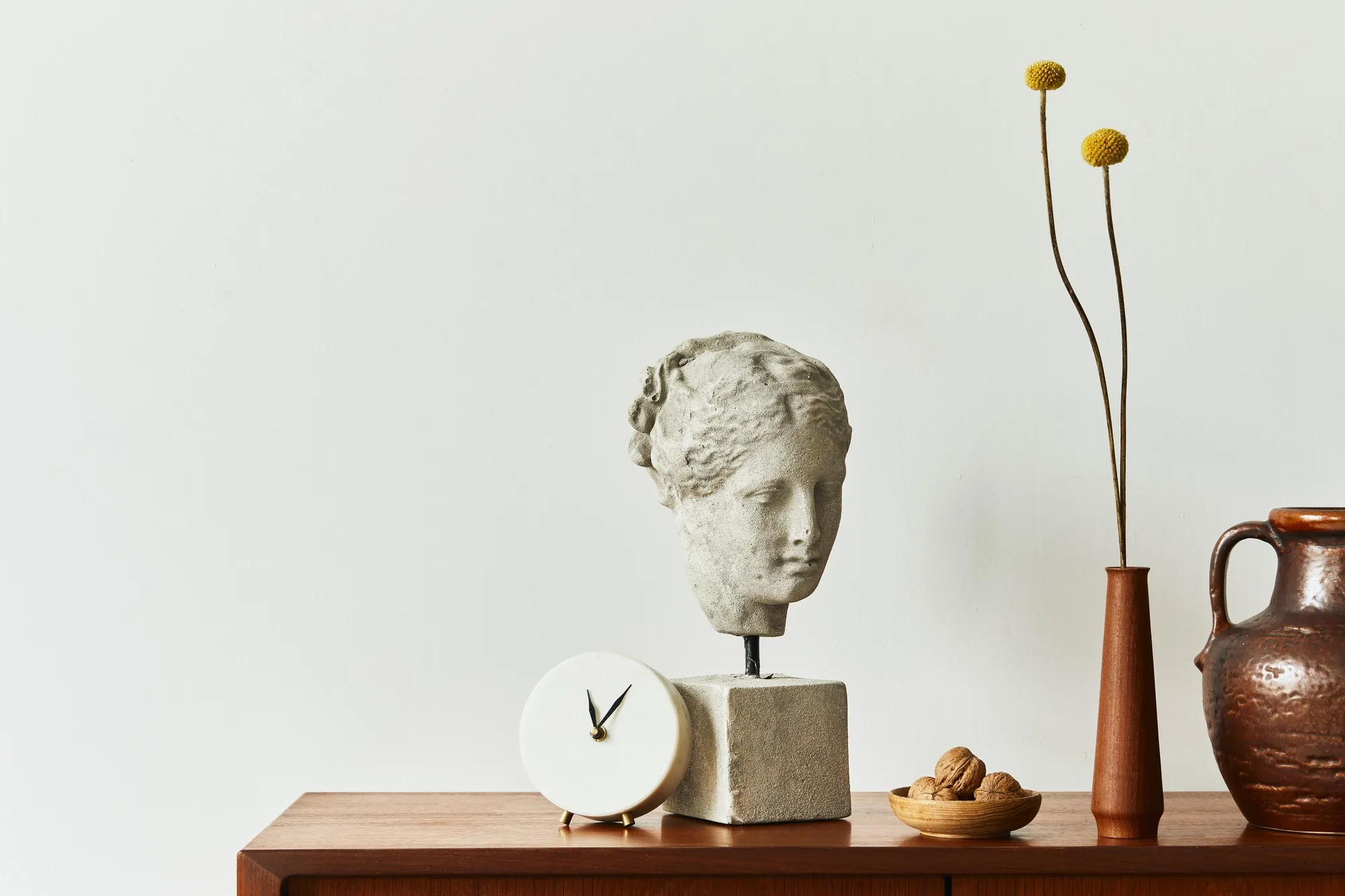The Evolution of Minimalism: Introduction
At its core, minimalism embodies simplicity—a philosophy that embraces reducing elements to their essential components, finding beauty and functionality within starkness and restraint.
More than just a design aesthetic, minimalism is a mindset, a reaction to a world often seen as overly complex and cluttered. It is about stripping away the superfluous and concentrating on what genuinely matters.
Over time, the minimalist ethos has permeated various spheres of human expression. Art emerged as a counter-movement to previous eras’ elaborate and ornate styles, favoring basic geometric shapes and a limited color palette to evoke more profound emotional responses.
Design, especially in architecture and product development, began echoing this “less is more” philosophy, where a form was closely tied to function, and every design choice was intentional and purposeful.
In lifestyle, the rise of minimalism marked a departure from consumerist tendencies, urging individuals to find contentment in fewer possessions, fostering both mental clarity and environmental sustainability. This journey through minimalism’s various avatars uncovers a world where less indeed can be more.
The Evolution of Minimalism The Historical Roots of Minimalism

Zen Buddhism and Japanese Aesthetics
The Japanese aesthetic, deeply rooted in Zen Buddhism, provides a rich and spiritual foundation for the principles of minimalism. Zen, with its emphasis on meditation, intuition, and the profound appreciation of the fleeting nature of life, has had a lasting influence on Japanese arts and culture.
Emphasis on Simplicity, Austerity, and Natural Beauty
Zen’s influence on Japanese aesthetics can be seen in the arts, architecture, and even daily rituals. Its foundational principles emphasize simplicity, austerity, and natural beauty.
In traditional Japanese tea ceremonies, for instance, every movement is deliberate, every object chosen for its aesthetic and function, but without unnecessary embellishment. This deliberate approach translates to a deep respect for objects and space and acknowledges the beauty in the unadorned.
The same aesthetic carries through in traditional Japanese architecture and garden design. Houses, temples, and gardens are typically stripped back to essential elements.
Raw materials, such as wood, stone, and paper, are celebrated for their intrinsic beauty without the need for additional adornment. The spaces and objects don’t seek to dominate or overwhelm but rather to coexist harmoniously with their surroundings.
The Concept of “Ma” (Negative Space) and its Role in Fostering Mindfulness
Central to Japanese aesthetics is the concept of “Ma” – often translated as “gap,” “space,” “pause,” or “the space between two structural parts.” It’s not merely an absence but a dynamic presence, a silence that speaks.
In traditional Japanese music, the pauses or silences between notes are as important as the notes themselves. In visual arts, the empty space isn’t just void; it’s part of the composition, giving balance, emphasis, and context to the objects within the space.
This appreciation of negative space extends beyond the arts. In everyday life, it’s an acknowledgment of the significance of moments of pause, reflection, and silence.
By focusing on the spaces in between – art, architecture, or daily life – one becomes more present, more attuned to the nuances of the world around them. This fosters mindfulness, a state of active attention to the present, which is at the core of Zen teachings.
In essence, the influence of Zen Buddhism and traditional Japanese aesthetics on minimalism underscores the power and beauty of simplicity. It reminds us that in restraint, we often find clarity and, in emptiness, a profound depth.
Modernist Movements in the Early 20th Century
The Rise of Bauhaus: “Form Follows Function”
Originating in Germany in 1919, the Bauhaus school became one of the most influential forces in modernist architecture and design.
Founded by Walter Gropius, Bauhaus was not just an educational institution; it was a movement that sought to bridge the gap between art and industry by combining crafts and fine arts.
“Form Follows Function” Philosophy
One of the central tenets of the Bauhaus philosophy was that design should serve its function. This perspective was encapsulated in the famous dictum “form follows function.”
In practical terms, this meant that aesthetics should derive from the purpose and functionality of the design. For instance, a chair should first be comfortable and sturdy, and its beauty should emanate from its utility rather than excessive decoration.
This philosophy was a departure from previous design movements that emphasized ornamentation. Instead, Bauhaus emphasized clear, linear structures and an absence of unnecessary details.
The materials used often showcased their natural attributes without being masked by decorative elements. This approach was revolutionary at the time and laid the groundwork for many subsequent design philosophies, including minimalism.
Influence on Modern Design
Bauhaus left an indelible mark on numerous design disciplines, from graphic design and typography to furniture and architecture. The movement’s influence can still be seen in today’s designs, prioritizing simplicity, clarity, and functionality.
By merging aesthetics with practicality, Bauhaus laid the foundation for a more holistic approach to design, ensuring that art wasn’t just for art’s sake but had a tangible, functional value in daily life.
De Stijl: Abstraction and Pure Geometric Forms
Emerging in the Netherlands around 1917, De Stijl (meaning “The Style” in Dutch) was an artistic movement that championed absolute abstraction and universality by reducing art to its essentials: pure geometric forms and primary colors.
Principles of De Stijl:
Artists and designers associated with De Stijl, such as Theo van Doesburg and Piet Mondrian, believed in purifying art by stripping it of individualistic and decorative elements.
Their work was characterized by using horizontal and vertical lines, rectangles, and a palette limited to primary colors (red, blue, and yellow) combined with neutrals like black, white, and gray.
The thought behind this approach was that art could reach a kind of universality through abstraction and simplification, transcending local cultures and traditions.
By focusing on elemental forms and colors, De Stijl’s artists sought to achieve harmony and order reflective of the underlying structure of the universe.
Legacy of De Stijl
While De Stijl was primarily known for its contributions to visual arts, its principles influenced a range of disciplines, from architecture to furniture design.
Notably, Gerrit Rietveld’s Red and Blue Chair is an iconic representation of De Stijl’s principles in furniture design, merging abstraction with function.
Like Bauhaus, De Stijl’s emphasis on simplification, order, and harmony resonated with the tenets of minimalism.
By celebrating the purity of form and color, De Stijl contributed to shaping a design language that championed essence over excess.
In the early 20th century, movements like Bauhaus and De Stijl redefined the boundaries of art and design. By championing functionality and abstraction, they paved the way for minimalism, emphasizing the beauty inherent in simplicity and order.
Post-World War II Minimalism
The aftermath of World War II marked a pivotal moment in global history, characterized by reconstruction, introspection, and an intense desire to break with the past.
In art and design, this era bore witness to a profound shift, steering away from the complexity and chaos of war and gravitating towards simplicity and clarity.
Here, minimalism emerged as a prominent force, a beacon of pure form and deliberate intent.
Reduction in Art and Design to Essential Forms and Colors
In the wake of the devastation and complexities of war, artists and designers sought a return to basics. There was an earnest desire to cut through the noise, to peel back layers and uncover the raw essence of form and color.
This was not just a stylistic choice but also a philosophical one, reflecting a more profound desire for authenticity, clarity, and directness.
Minimalist art and design of this period were characterized by an absence of personal expression or emotions. Instead, works were often created following specific, predetermined procedures, underlining the importance of the process.
Architectural and design products from this period mirrored this minimalist ethos, where buildings, furniture, and everyday objects were stripped of ornamentation, focusing solely on function and form.
The designs were typically linear, using basic geometric shapes and a limited color palette, often emphasizing the material’s inherent beauty.
Artists at the Forefront: Donald Judd, Dan Flavin, and Agnes Martin
Several artists defined the minimalist movement in the post-World War II era. While diverse in their mediums, their works were united in their quest for simplicity and purity.
- Donald Judd: Donald Judd, an American artist, rejected the label of a sculptor, preferring to be known as someone who made specific objects. Judd’s works defied categorization, often large-scale installations or “boxes” made from industrial materials like steel, aluminum, and Plexiglas. They were neither paintings nor traditional sculptures. They existed simply as objects in space, emphasizing their form and materiality. Judd’s work questioned traditional art-making methods and encouraged viewers to experience and interact with the space around the work as much as the work itself.
- Dan Flavin: Using commercially available fluorescent light fixtures, Dan Flavin created “situational” installations where light became the medium. His arrangements, often in geometric patterns or linear forms, cast colors and shadows, transforming and defining the spaces they occupied. Flavin’s minimal approach challenged traditional notions of art, emphasizing the transient and ephemeral nature of light and space.
- Agnes Martin: Agnes Martin’s work is a testament to the power of subtlety. Her paintings, often large canvases featuring faint grids or subtle horizontal lines in soft hues, evoke a sense of serenity and contemplation. Rather than loud statements, Martin’s works whisper, inviting viewers to engage in a meditative, reflective experience. Her minimalist approach, characterized by repetition and slight variations, reflects her belief in art’s ability to represent abstract emotions and inner realities.
In the post-World War II era, minimalism emerged as a powerful antidote to a complex world.
Through the reduction of art and design to their essential forms and colors and through the pioneering works of artists like Judd, Flavin, and Martin, minimalism challenged and expanded the boundaries of artistic expression, championing the profound in the simple and the universal in the specific.
Why Minimalism Became Popular?

1. Societal Factors
As the world catapulted into an era of rapid industrialization, urbanization, and consumerism, society began facing an influx of choices, stimuli, and information.
This sudden barrage led to unexpected challenges, prompting a collective reevaluation and subsequent gravitation towards minimalism.
Overwhelm by Rapid Urbanization and Consumerism
Cities burgeoned, becoming hubs of activity and innovation. However, this rapid urbanization brought the trappings of a consumer-driven culture: billboards, flashing advertisements, crowded spaces, and a constant push towards ‘more.’
As homes began to overflow with items and live with commitments, a sense of overwhelming clutter permeated society. The constant barrage of visuals and information led to sensory overload, prompting a need for calm and clarity.
Desire for Simplicity in a Complex World
In reaction to the chaos and complexity, a profound desire emerged for simplicity—a yearning to declutter, both physically and metaphorically. People began to seek environments stripped of excess, offering a respite from the constant stimulation.
Spaces that were simple, clear, and functional became increasingly appealing. This societal pivot was about aesthetics and reclaiming peace, clarity, and a sense of purpose in an increasingly convoluted world.
2. Economic Factors
The economic landscape also played a pivotal role in minimalism’s ascent, particularly in housing and design.
Affordable Housing and Design Solutions
As urban centers expanded and property prices soared, there was a pressing need for housing solutions that were both economical and functional.
Minimalist design, emphasizing simplicity and utility, offered an answer. Compact, multifunctional spaces that utilized every square foot efficiently became the norm.
Furniture that could adapt to various needs, open layouts that provided flexibility, and designs that prioritized function over form started to gain traction.
Efficient Use of Resources
The latter half of the 20th century also grew consciousness about resource conservation—minimalist design, inherently resource-efficient, aligned with this ethos.
By reducing waste and emphasizing sustainability, minimalism became synonymous with responsible design. It catered to economic constraints and echoed a growing environmental consciousness.
3. Philosophical and Psychological Factors
The allure of minimalism isn’t restricted to its visual appeal; it resonates deeply with certain philosophical and psychological paradigms.
Emphasis on Intentional Living and Mindfulness
At its core, minimalism is about intentionality: making deliberate choices about what to own, where to invest time, and what to prioritize.
This approach dovetails with the principles of mindfulness, a conscious effort to stay present and cultivate awareness. Minimalism offers a pathway to a more centered, mindful existence by eliminating distractions and focusing on the present.
Eliminating Excess to Focus on the Essential
Philosophically, minimalism nudges individuals to question the essence of happiness and fulfillment.
Does true contentment lie in accumulation or appreciation?
By urging individuals to eliminate excess and focus on the essentials, minimalism promotes a deeper connection with one’s values, aspirations, and authentic self. Psychologically, this can increase happiness, reduce stress, and a greater sense of purpose.
In summary, the popularity of minimalism can be attributed to a confluence of societal, economic, philosophical, and psychological shifts.
It emerged as a beacon of clarity in a world of chaos, a design ethos that resonated deeply with the zeitgeist of the times and continues to influence contemporary culture.
The Evolution of Minimalism: Impact of Minimalism on Modern Design

1. Architecture and Interior Design
Architecture and interior design have seen a profound influence from minimalism, reflecting its aesthetics and underlying philosophy.
Less is More
This Ludwig Mies van der Rohe aphorism encapsulates the minimalist approach to design.
Modern architectural works often showcase clean, unbroken lines, open spaces devoid of clutter, and a neutral color palette. Spaces are designed to breathe, creating an inviting and relaxing tranquil environment.
Importance of Functionality
The minimalist home or building isn’t just about aesthetics—it’s deeply functional. Every item, every piece of furniture, and every design element is purposeful.
There’s no room for superfluous objects. Instead, the emphasis is on multifunctional components that maximize utility without compromising beauty.
2. Digital Design and Technology
The digital realm, too, hasn’t remained untouched by the minimalist wave. From apps to gadgets, minimalism’s principles are evident.
User-friendly Interfaces with Limited Distractions
As technology becomes an intrinsic part of our lives, there’s a growing need for intuitive and easy-to-navigate interfaces. Minimalist digital design offers just that.
By eliminating unnecessary elements and focusing on essentials, designers create interfaces that provide seamless user experiences.
The clean, clutter-free designs reduce cognitive load, ensuring users can accomplish tasks efficiently.
Iconic Minimalist Products
Apple’s iPhone stands as a paragon of minimalist design in technology. Its clean lines, unadorned surfaces, and intuitive interface showcase the principles of minimalism.
But it’s not just about looks—like other minimalist tech products, the iPhone emphasizes functionality, ensuring that form and function go hand in hand.
3. Fashion and Apparel
Minimalism has had a transformative impact on fashion, changing what we wear and how we think about clothing.
Capsule Wardrobes, Neutral Colors, and Timeless Pieces
The concept of a capsule wardrobe, a collection of essential, timeless pieces that can be mixed and matched, epitomizes minimalist fashion.
Instead of chasing fleeting trends, the emphasis is on quality, versatility, and sustainability. Neutral color palettes dominate, offering elegance and simplicity.
The Rise of Sustainable and Ethical Fashion
Minimalism’s influence extends beyond aesthetics, prompting a reevaluation of the fashion industry’s practices. There’s a growing emphasis on sustainable fashion, which prioritizes eco-friendly materials and ethical manufacturing.
The minimalist ethos of ‘less but better’ resonates deeply with sustainable fashion’s objectives.
4. Branding and Graphics
In the domain of branding and graphics, the evolution of minimalism has ushered in an era of clarity and simplicity.
Simplified Logos and Branding
Brands like Google and Starbucks have evolved their logos over time to become more streamlined and straightforward.
This isn’t merely a design choice—it reflects a broader desire for clarity and recognizability in a crowded market.
Clutter-free Advertisements with Clear Messaging
Modern advertisements, influenced by minimalism, have moved away from information overload. Instead, they focus on clear, concise messaging. The visuals are clutter-free, ensuring the core message is preserved amidst noise.
Minimalism, emphasizing simplicity, functionality, and intentionality, has reshaped modern design across domains.
Whether in the form of a building, an app, a dress, or a logo, its principles resonate, reflecting a collective yearning for authenticity and clarity in a complex world.
The Evolution of Minimalism: Challenges and Criticisms of Minimalism

While influential and revered by many, minimalism has not been without its challenges and criticisms.
As with any significant movement or philosophy, it has faced its share of scrutiny and debate.
Perception as Cold or Impersonal
One common criticism against minimalism, especially in interior design and architecture, is that it can come across as cold, sterile, or impersonal.
The clean lines, neutral color palettes, and absence of ornamentation—hallmarks of minimalist design—can, to some, feel devoid of warmth or individual personality.
This critique often arises from a perspective that equates warmth and coziness with personal artifacts, vibrant colors, and varied textures. When these are missing or significantly reduced, spaces can seem uninviting or generic to some individuals.
Additionally, while minimalist designs seek to eliminate the non-essential, what’s deemed “essential” is deeply personal.
A space that feels perfectly curated and meaningful to one person might seem stark and empty to another.
Minimalism vs. Forced Minimalism: Economic Necessity vs. Choice
A significant criticism surrounds the privilege inherent in choosing minimalism. For many, living with less isn’t a philosophical choice but a stark economic reality.
There’s a vast difference between opting for a minimalist lifestyle because it aligns with one’s values and being forced into minimalism due to economic constraints.
Critics argue that glorifying minimalism can inadvertently romanticize poverty or overlook the challenges faced by those for whom minimalism isn’t a choice.
This critique underscores the importance of distinguishing between aesthetic minimalism (often a choice made by those with the means to choose) and enforced minimalism (where individuals live with less due to circumstances beyond their control).
Over-commercialization: “Selling” the Minimalist Lifestyle
As minimalism grew in popularity, it inevitably caught the eye of marketers and businesses.
This led to a wave of products and services geared towards “helping” individuals achieve a minimalist lifestyle.
There’s an inherent irony in commercializing and selling minimalism—a philosophy rooted in reducing consumption.
Critics highlight the paradox of being encouraged to buy more products (albeit minimalist ones) to live a minimalist life.
This over-commercialization can dilute the core message of minimalism, transforming it from a profound philosophical choice to just another consumer trend.
It also raises questions about authenticity: Can one honestly buy their way into a minimalist lifestyle?
While minimalism offers a compelling lens through which to view design, consumption, and life, it’s essential to approach it with nuance and critical thought.
Like any philosophy or movement, it has its merits and challenges—and understanding both is key to its authentic and meaningful adoption.
The Evolution of Minimalism: Conclusion

As we reflect on the evolution and influence of minimalism, its lasting imprint on modern society and design is undeniable.
From the sleek silhouettes of our gadgets to the mindful spaces we inhabit and how we conceptualize consumption and clutter, minimalism has offered a fresh, purposeful perspective.
However, as with any influential movement, the essence of minimalism lies in its balance. While it promotes simplicity, clarity, and intentionality, ensuring these principles don’t overshadow or suppress individual expression is crucial.
After all, the spaces we inhabit, the products we use, and the clothes we wear are extensions of our identity. They tell our story, reflect our values, and underscore our aspirations.
At its best, minimalism provides a canvas—a backdrop against which our individual stories can shine brightly.
In embracing minimalism, the challenge is not to eschew complexity or individuality but to distill it—to find that unique essence that resonates deeply and authentically with who we are.
It’s about creating room for what truly matters, allowing us to live, design, and express with intention.
As we move forward, this harmonious coexistence of simplicity and individual expression will continue to shape, redefine, and enrich the minimalist narrative.
The Evolution of Minimalism: FAQ
Minimalism emphasizes simplicity, clarity, and intentionality. It is about reducing to the essentials, decluttering physical and mental spaces, and making deliberate choices in design, consumption, and lifestyle.
Minimalism has significantly influenced modern architecture and design by promoting clean lines, open spaces, functional layouts, and a neutral color palette. The mantra “form follows function” is central, ensuring spaces and objects are beautiful and purposeful.
While its popularity in mainstream culture has fluctuated, minimalism has deep historical roots, from Zen Buddhism’s principles to 20th-century art and design movements. Its lasting influence on various domains indicates it’s more than a fleeting trend.
Critics often point out that minimalism can be perceived as cold or impersonal, especially in design. There are also concerns about the commercialization of the minimalist lifestyle and the distinction between choosing minimalism and being forced into it due to economic constraints.
Integrating minimalism involves being intentional about one’s choices. In design, this means prioritizing functionality and simplicity, and in daily life, it might include decluttering, focusing on quality over quantity, and being mindful of consumption patterns. Remember, minimalism isn’t about having less but making what you have count.








